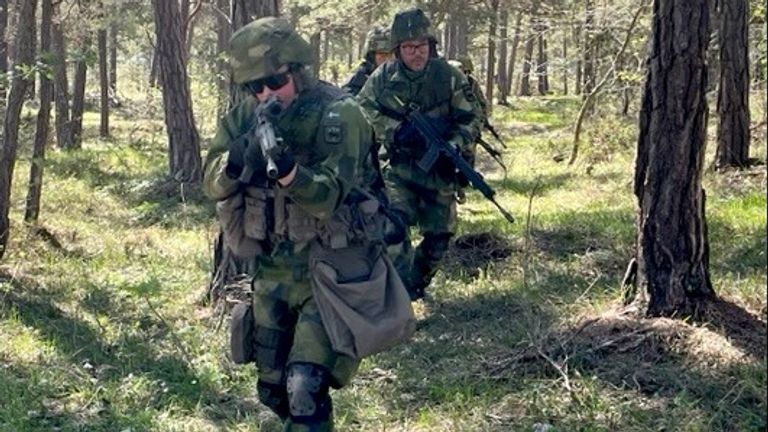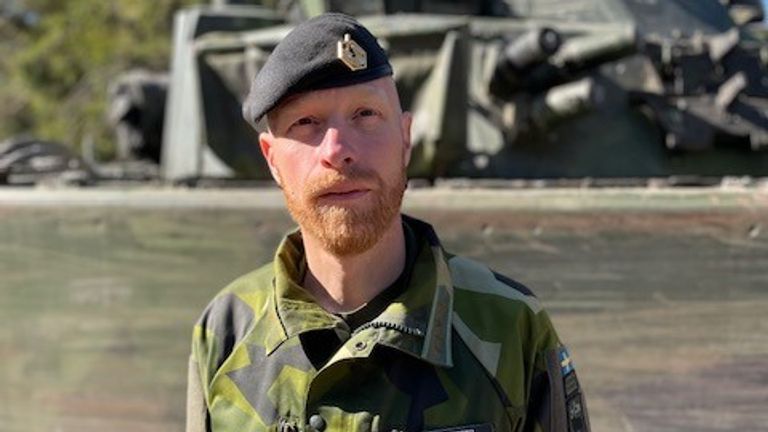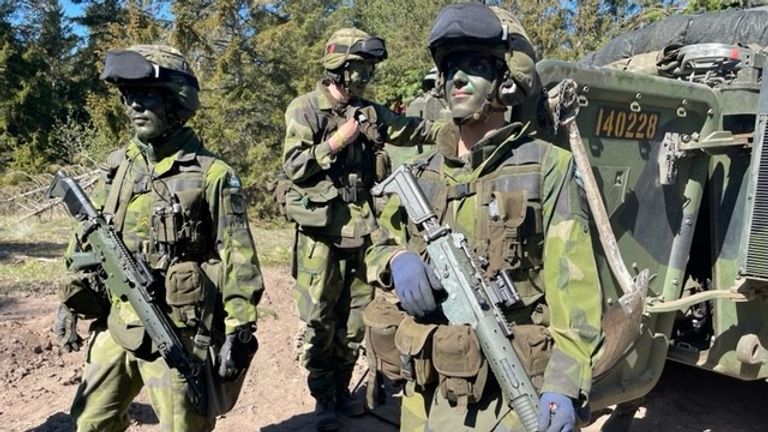[ad_1]
On the island of Gotland, they’re training for war.
Members of the Home Guard lie in the grass firing off rounds of blanks at an imaginary enemy.
In another field, conscripts take part in live-fire exercises.
Sweden is building its defences and Gotland’s strategic location in the Baltic Sea gives it a key role.
In the next few years, the military hopes to be able to deploy 4,000 troops from the island in wartime and add anti-ship missiles to the arsenal which already includes surface to air missiles.
Putin warns of ‘irreversible consequences’ for Europe – Ukraine news live
The Gotland regiment was resurrected in 2018 as a part of the general rearmament following Russia’s annexation of Crimea in 2014 but the war in Ukraine has accelerated things.
“Putin has clearly shown his intent and his will to use military force in order to gain his political goals,” explains commander of the Gotland regiment Colonel Magnus Frykvall, who describes Russia as the major threat.
“We had a plan to increase the military capability on the island for a long time, but since the invasion [of Ukraine] we try to do it a lot faster.”
The invasion on 24 February radically altered security policy in Sweden, pushing it from being neutral to wanting to join NATO.
The prime minister confirmed the country will hand in its application along with Finland tomorrow.
After about 200 years old military non-alignment, many of the soldiers on Gotland think it’s time to join the alliance.
Follow the Daily podcast on Apple Podcasts, Google Podcasts, Spotify, Spreaker
“NATO gives high-security measures. It’s more likely we can keep the peace here in Europe. So I think it is really, really great for both Sweden and Europe and NATO that Sweden joins NATO,” says Marcus Lagergren, a member of the Home Guard.
In 1808, Gotland was briefly occupied by the Russians who also prized its strategic location.
Now a popular tourist spot, it has always been important to Sweden’s defence.
“The saying is the one who control Gotland controls the southern Baltic,” explains Mikael Norrby, a historian at the University of Uppsala.
“It’s a question of location. You have Gotland in the middle of the Baltic, it’s less than 100km to the Swedish mainland, perhaps 120km to the Baltic states, 200km to Finland and 300km down to Kaliningrad, the Russian enclave… no matter if you are east or west, you don’t want the other guy to have Gotland.”
Despite already being a NATO partner, the official move away from being neutral is emotional for many Swedes.
Based near the military compound, Göran Hoas is used to the sound of gunfire as he farms.
He thinks Sweden needs to join NATO to prevent it from becoming isolated but he has some red lines.
“The military okay, the nuclear no, because I don’t like nuclear in any form,” he says.
Read more: Russia’s war in Ukraine triggers seismic shift in Europe’s security
The country’s prime minister, Magdalena Andersson, and several other party leaders have also said they don’t want nuclear weapons on Swedish soil.
While the details around membership are still to be thrashed out but Russian aggression has reset the rules: neutrality is no longer an option, instead Sweden is relearning how to be a military power.
[ad_2]





